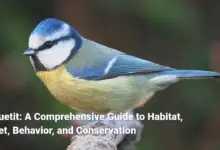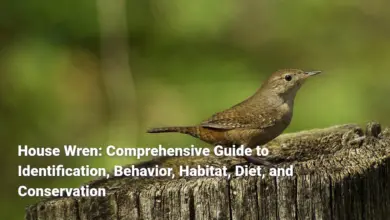Chickadee Bird: A Complete Guide to Types, Habitat, Behavior, Communication, Nesting, and Conservation
An In-Depth Guide to Chickadee Birds: Types, Habitat, Behavior, Communication, Nesting, and Conservation
Chickadee Bird are a delightful group of small birds belonging to the family Paridae, attracting the attention and admiration of birdwatchers and nature enthusiasts across North America. Characterized by their curious and friendly nature, these birds quickly recognize and adapt to human presence, often visiting bird feeders with vibrant colors and familiar songs. Among the various species, the Black-capped Chickadee (Poecile atricapillus) stands out as the most widely recognized, known for its playful behavior and distinctive two-tone calls. Whether you encounter them flitting among the trees or visiting your backyard, chickadees bring a burst of joy and energy to the natural world.
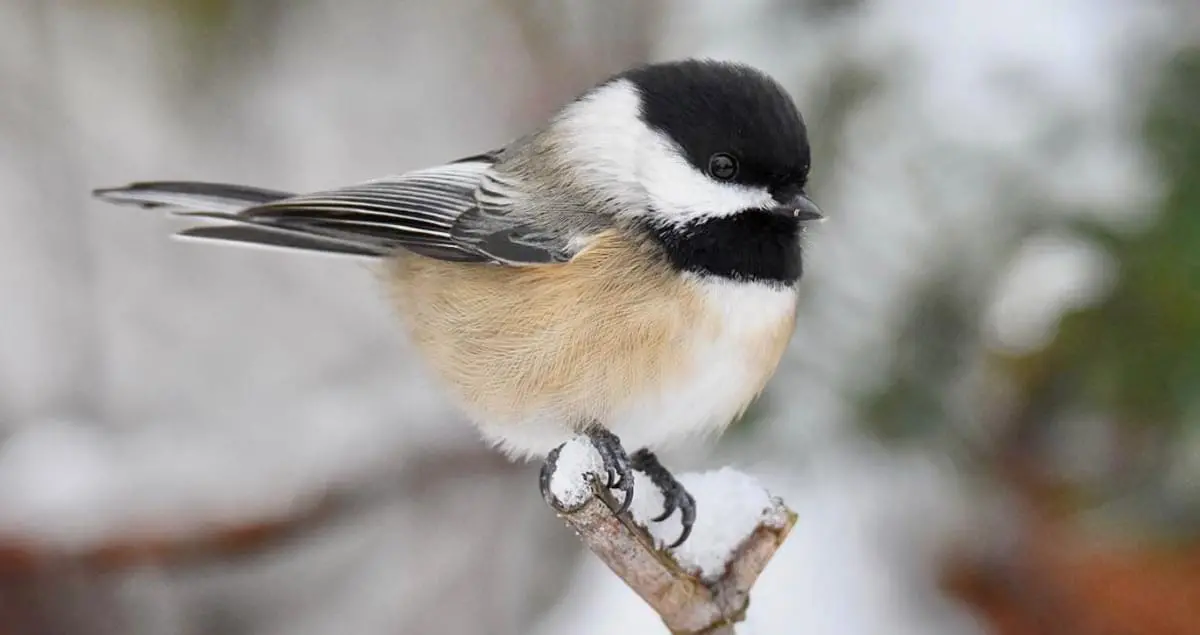
Chickadees are not just charming; they play a significant role in their ecosystems. As insectivores and seed eaters, they aid in controlling insect populations while also helping to disperse seeds, enhancing plant growth. Despite their small size, these birds display remarkable social behaviors, complex communication skills, and impressive cognitive abilities. This article delves deeply into the world of chickadees, exploring various species, their habitats, behaviors, and conservation status, painting a comprehensive picture of these beloved avian companions.
Types of Chickadee Bird
Chickadees represent a diverse genus with numerous species that inhabit various regions and environments. Their size, plumage, and even calls vary from one species to another, providing ample opportunities for bird enthusiasts to familiarize themselves with their distinctions. Among the prominent species found across North America are:
- Black-Capped Chickadee Bird (Poecile atricapillus): The most recognized chickadee, found predominantly in northern and western U.S. and Canada. Their black cap and bib contrast sharply with their white cheeks, making them easy to identify.
- Carolina Chickadee Bird (Poecile carolinensis): Common in the eastern U.S., these birds have similar markings to Black-capped Chickadees but are smaller and have different vocalizations.
- Mountain Chickadee Bird (Poecile gambeli): Patchily distributed in western mountain ranges, featuring a distinctive black cap and white eyebrow stripe that sets them apart.
- Chestnut-Backed Chickadee Bird (Poecile rufescens): Found primarily in the Pacific North West, they are recognized by their chestnut-colored back and sides.
- Boreal Chickadee Bird (Poecile hudsonicus): A smaller, muted version of the chickadee often seen in northern forests with a pronounced brownish-gray plumage.
- Mexican Chickadee Bird (Poecile sclateri): Located in high elevations in Mexico, these are smaller and have different coloration patterns.
- Gray-Headed Chickadee Bird (Poecile cinctus): This less common species is notable for its distinct gray head and a generally more subdued appearance.
Each species possesses unique characteristics regarding their habitat preferences, vocalizations, and dietary habits. For birdwatchers, understanding these differences enriches the experience of observing these feathered friends in their natural habitats.
Summary Table of Chickadee Species
| Species | Habitat | Size (inches) | Call Characteristics |
|---|---|---|---|
| Black-Capped Chickadee | Deciduous & mixed forests | 4.7 – 5.9 | “Chick-a-dee-dee-dee” |
| Carolina Chickadee | Southeastern U.S. | 4.0 – 4.7 | “Chick-a-dee-dee” softer tone |
| Mountain Chickadee | Western mountains | 4.5 – 5.5 | Fast series of “dee” notes |
| Chestnut-Backed Chickadee | Pacific Northwest | 4.6 – 4.9 | Similar to Black-capped |
| Boreal Chickadee | Northern forests | 4.5 – 5.2 | Lower pitch “dee” calls |
| Mexican Chickadee | High elevations in Mexico | 4.5 – 5.1 | Unique regional variations |
| Gray-Headed Chickadee | High Arctic regions | 4.5 – 5.0 | Low pitch, less distinct calls |
Understanding the nuances of each chickadee species cultivates a deeper appreciation for these engaging birds, enhancing the experience of connecting with nature.
Identification of Black-Capped Chickadee Bird
The Black-Capped Chickadee Bird is arguably the most iconic of the chickadee species, easily recognizable by its charming appearance and distinctive vocalizations. Measuring approximately 12 to 15 cm (4.7 to 5.9 inches) in length, it has a wingspan ranging from 16 to 21 cm (6.3 to 8.3 inches) and weighs around 9 to 14 grams. Its plumage is strikingly beautiful, featuring a shiny black cap and bib juxtaposing bright white cheeks. The gray back and wings serve as a canvas, highlighting the vivid characteristics of this bird. With its stout bill and lively demeanor, the Black-Capped Chickadee stands out among its peers.
In terms of behavior, Black-Capped Chickadees are social and curious, often engaging with their surroundings in a playful manner. Their calls particularly the characteristic “dee-dee-dee” song serve to communicate with other members of their flock. These calls serve multiple purposes, including announcing food availability, expressing both excitement and alarm, as well as courting potential mates during the breeding season. The relationship between their vocalizations and their social dynamics showcases the intricate communication strategies that govern the life of these wonderful birds.
The seasonal changes in their behavior are fascinating. During winter, they form loose flocks with other bird species, allowing them to cooperate in foraging and maintaining warmer temperatures during cold spells. This social behavior not only aids in survival but also enriches their encounters with human observers, who enjoy witnessing these charming interactions. In spring, male Black-Capped Chickadees exhibit territorial behaviors, using their vocal prowess to stake their claim over a breeding territory.
When observing a Black-Capped Chickadee, one is often drawn to its adorable antics and spirited nature. Watching them flit about the trees, their black heads bobbing among the branches, is like witnessing a lively dance of joy that can brighten any day. Their endearing qualities make them a favorite among bird enthusiasts and casual observers alike, embodying the essence of avian charm.
Comparison with Carolina Chickadee Bird
The Carolina Chickadee Bird (Poecile carolinensis) shares a close kinship with the Black-Capped Chickadee, displaying striking similarities and distinct differences that make each uniquely captivating. While these two beloved species are both prevalent in North America, particularly in overlapping regions, their subtle distinctions underscore their individual identities.
In terms of size, the Carolina Chickadee Bird is slightly smaller, typically measuring around 4.0 to 4.7 inches in length. This difference may seem minimal, but when seen side by side, the dissimilarity becomes more pronounced. Both birds exhibit similar plumage; however, the Carolina’s lighter and softer coloration creates a more subdued appearance compared to the sharper contrast of the Black-Capped’s plumage.
Vocalizations serve as another area of distinction. The Carolina Chickadee Bird boasts a distinct call described as softer and more nasal compared to the Black-Capped Chickadee’s fuller, lower-pitched voice. Observers often note that the Carolina’s call is quicker, producing around six to seven “dee” notes per second, while the Black-Capped’s call leans towards a slightly slower tempo with its four to five notes per second. This vocal quality helps to differentiate the two species even when they share the same habitats.
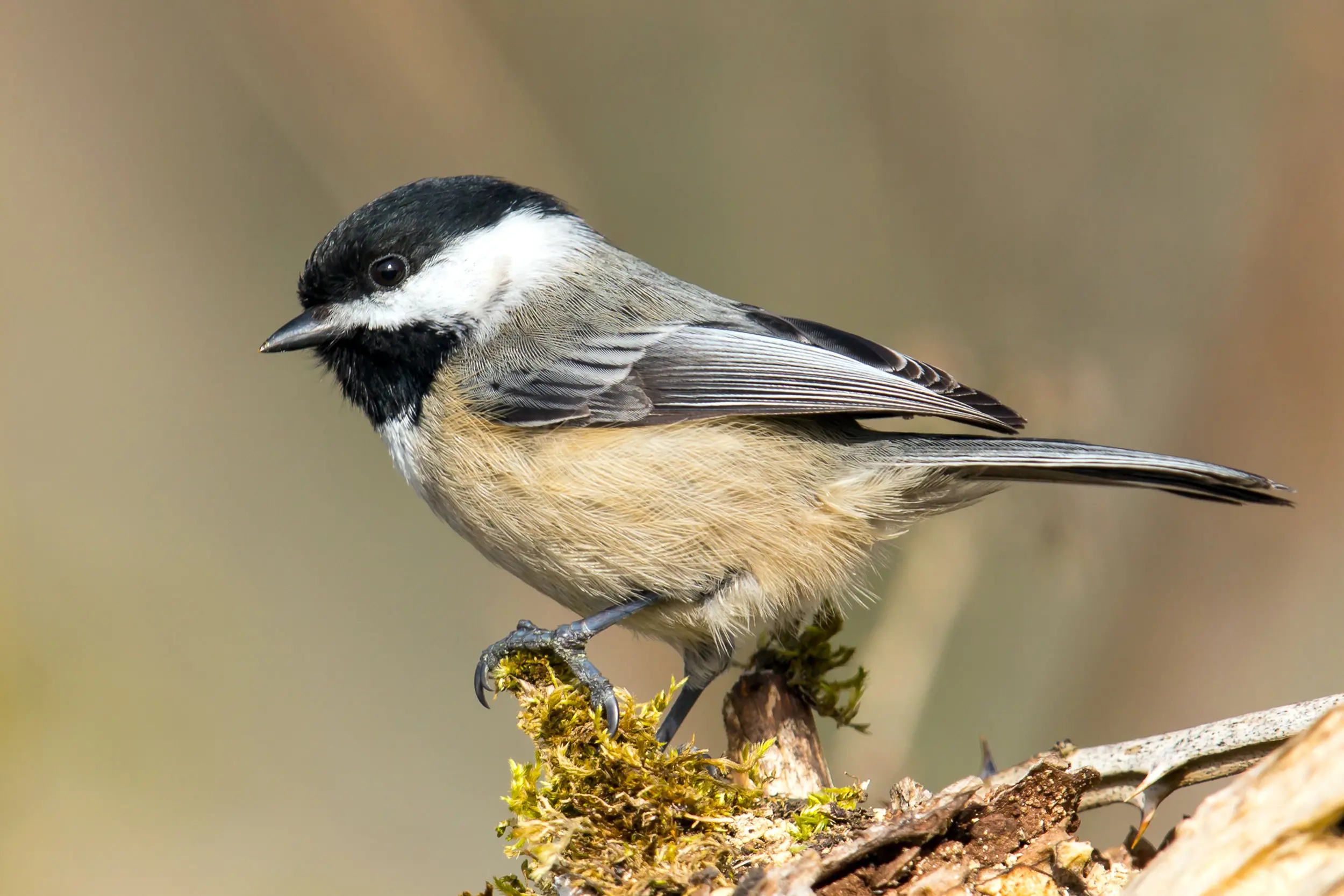
Habitat preferences also show interesting nuances. The Carolina Chickadee Bird tends to inhabit more wooded suburban areas, favoring warmer climates compared to the Black-Capped Chickadee, which thrives in more northern, deciduous, and mixed forests. These factors highlight the adaptability of both species, always challenging birdwatchers to identify the distinctions in their familiar environments.
| Feature | Black-Capped Chickadee | Carolina Chickadee |
|---|---|---|
| Size | 4.7 – 5.9 inches | 4.0 – 4.7 inches |
| Plumage | Bold black cap and bib | Softer, lighter coloration |
| Call Characteristics | Lower, fuller calls | Softer, faster nasal tone |
| Habitat Preference | Northern forests, cold areas | Suburban, warmer climates |
As birdwatchers hone their skills to recognize the differences between these chickadees, they reap the rewards of a connection to the intricacies of nature. This comparison serves not just as a means of identification but also deepens the appreciation for the complexities of their behaviors and life strategies.
Overview of Other Chickadee Bird Species
In addition to the Black-Capped and Carolina Chickadees, several other fascinating chickadee species inhabit various ecological niches across North America. Each presents distinct characteristics that contribute to the diversity within the family, showcasing adaptations that allow them to thrive in their respective habitats.
The Mountain Chickadee Bird (Poecile gambeli) is primarily found in high-elevation areas, particularly in the Rocky Mountains. This chickadee is characterized by its striking black cap and a delightful white eyebrow stripe. Unlike its lower-elevation relatives, it has adapted to the cooler, more rugged terrains of mountainous habitats. Its vocalizations are distinctively higher-pitched compared to the Black-Capped and Carolina species, offering a unique auditory experience for listeners in its range.
Moving westward, the Chestnut-Backed Chickadee Bird (Poecile rufescens) can be found along the Pacific coast, particularly in coniferous forests. This species exhibits a beautiful chestnut-colored back, setting it apart from its more uniformly gray counterparts. Chestnut-Backed Chickadees favor mixed woodland environments which provide ample cover, allowing them to blend seamlessly with their surroundings a clever evolutionary tactic for evading potential predators.
In the boreal forests of Canada and the northernmost regions of the United States, the Boreal Chickadee Bird (Poecile hudsonicus) resides. It is notable for its subdued brownish-gray plumage. Their preference for dense coniferous forests allows them to remain relatively hidden from predators, while their softer calls suit the quieter environment of their home range.
For those journeying to the southern parts of North America, the Mexican Chickadee Bird (Poecile sclateri) offers an exciting encounter. This lesser-known species prefers higher elevations in Mexico, showcasing unique adaptations to its environment. Lastly, the Gray-Headed Chickadee Bird (Poecile cinctus) inhabits Arctic regions, making it a rare gem for avid birdwatchers. Its conservation status reflects ongoing assessments, marking the necessity of continued monitoring of its population due to habitat changes.
| Species | Habitat | Unique Features |
|---|---|---|
| Mountain Chickadee | High elevations (Rocky Mountains) | Black cap, white eyebrow stripe |
| Chestnut-Backed Chickadee | Pacific coniferous forests | Chestnut colored back |
| Boreal Chickadee | Boreal forests (Northern regions) | Brownish-gray plumage |
| Mexican Chickadee | High elevations in Mexico | Adapted to mountainous areas |
| Gray-Headed Chickadee | Arctic regions | Unique regional characteristics |
As more species are recognized within the chickadee family, observers can better appreciate the diversity and adaptability of these charming birds, understanding their ecological roles and the importance of protecting their habitats to ensure their survival.
Chickadee Bird Habitat
Chickadees thrive in various habitats, which are crucial for their survival and reproduction. Their adaptability to both natural and human-altered environments is remarkable. Here are the primary habitat components that play a significant role in their life history.
- Forest Types: Chickadees can be found in a range of forest types, including deciduous, coniferous, and mixed forests. These habitats provide essential food sources, nesting opportunities, and shelter. Deciduous forests, with their leaf-bearing trees, and coniferous forests, characterized by evergreen trees, contribute to the chickadees’ diverse diet and habitats.
- Edges of Woodlands and Open Spaces: Chickadees are often spotted on the edges of wooded environments where forests transition to open spaces. This ecological edge provides easy access to food sources while keeping them safe from predators. Additionally, parks, gardens, and backyard feeders are welcoming environments for these sociable birds.
- Specific Vegetation: Favorable habitats for chickadees often include mature trees, thickets of willows, and riparian zones near water bodies. These areas not only offer food but also provide the necessary nesting sites. Natural cavities in trees coupled with abundant foliage make hemmed-in areas particularly attractive as living spaces.
- Adaptability to Human Environments: Chickadees have demonstrated impressive adaptability, frequently visiting suburban settings. Bird feeders filled with seeds and suet attract them, illustrating their ability to thrive in altered landscapes. Whether near homes or in urban parks, chickadees bring their lively presence to the human-populated world.
- Winter Habitats: During winter months, chickadees often retreat to denser coniferous forests where they may form flocks with other bird species. This social behavior aids in warmth and foraging efficiency, enhancing their chances of survival during harsh conditions.
| Habitat Component | Description |
|---|---|
| Forest Types | Deciduous and coniferous forests |
| Edges of Woodlands | Areas for easy access to food |
| Specific Vegetation | Mature trees, shrubs, riparian zones |
| Adaptability to Humans | Frequent visits to backyards |
| Winter Habitats | Dense trees, flocking behavior |
Understanding the habitats in which chickadees thrive helps enthusiasts create welcoming environments for these birds. By establishing feeding stations and ensuring the preservation of natural landscapes, we can contribute to the well-being of these charming avian communities.
Preferred Environments
Chickadees are well-known for their adaptability; they inhabit various environments that fulfill their physiological and behavioral needs. The following factors outline the preferred environments for these birds:
- Diverse Forest Ecosystems: Chickadees thrive in various forest ecosystems ranging from deciduous forests with abundant insect life in the warmer months to coniferous forests that provide covering and hiding opportunities during the cold winter season. The variety of flora in these ecosystems is vital for food intake and nesting.
- Edge Habitats: They are drawn to forest edges where open spaces meet dense woods. These transitional regions offer accessible food sources and quick escape routes from predators. Such habitats also allow for better opportunities to forage among different species of plants and trees.
- Suburban Landscapes: Chickadees have become increasingly adapted to human environments, favoring suburban backyards, parks, and gardens. Birdhouses and feeders filled with seeds provide an easy food source, making these caged habitats a haven for chickadee populations.
- Riparian Zones and Wetlands: Areas near water bodies with healthy vegetation are also appealing to chickadees. The combination of diverse plant life and water supply offers necessary materials for foraging and nesting. These zones often support insect populations that serve as a primary food source.
- Safety from Predators: When selecting environments, chickadees typically prioritize areas that minimize exposure to potential threats. They favor locations densely covered in foliage or trees that can hide them from predators, reinforcing their need for safety in foraging and breeding activities.
| Preferred Environment | Description |
|---|---|
| Diverse Forest Ecosystems | Provides food and nesting resources |
| Edge Habitats | Easy access to food and predator escape routes |
| Suburban Landscapes | Adapted to human presence and backyard feeders |
| Riparian Zones and Wetlands | Healthy vegetation with water supply |
| Safety from Predators | Densely covered areas offering protection |
These preferred environments underscore the chickadees’ adaptability and resilience. By cultivating green spaces and supporting natural habitats, we can contribute to the flourishing of chickadee bird communities and promote biodiversity in our surroundings.
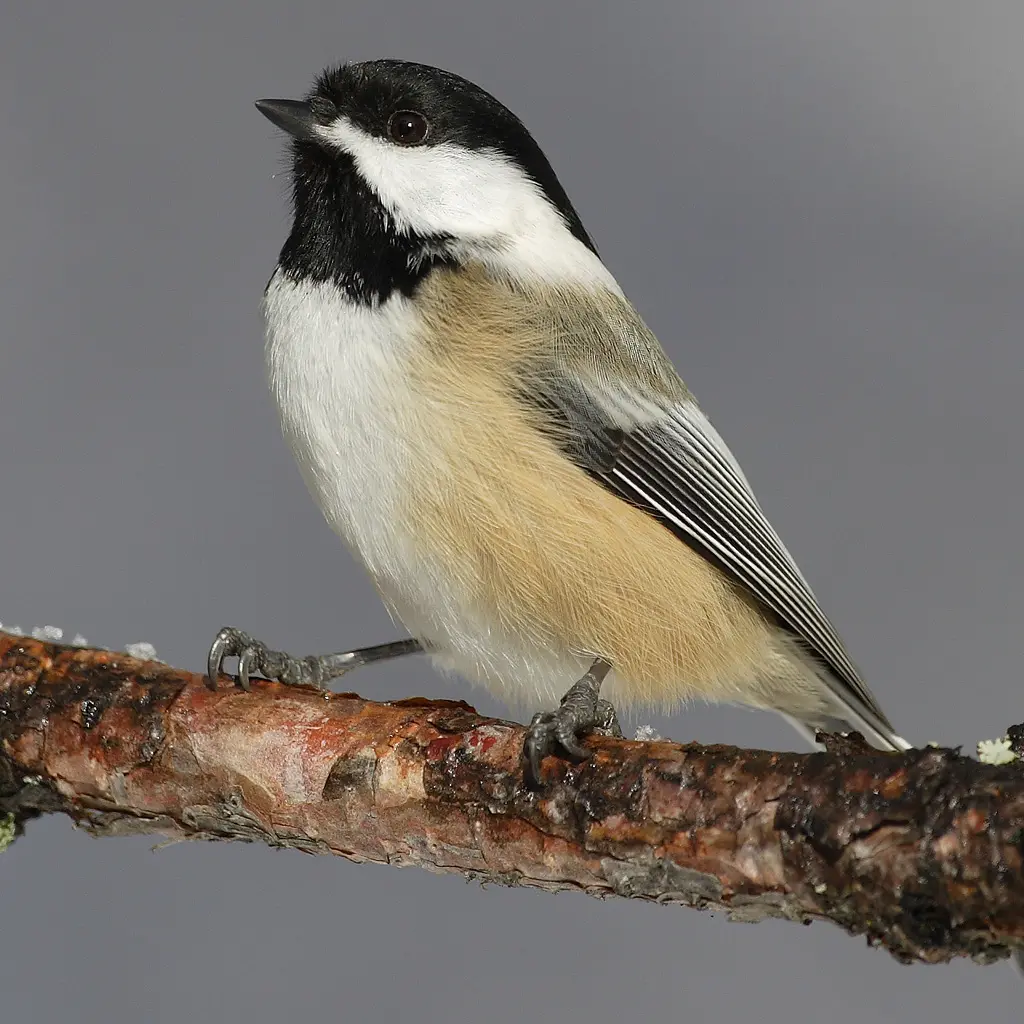
Geographic Distribution in North America
Chickadees, particularly the Black-Capped Chickadee (Poecile atricapillus), are prevalent throughout North America. Their geographic distribution spans from Alaska down through Canada and reaching into the northern United States, making them familiar companions in cold climates.
- Black-Capped Chickadee Distribution: Frequently found in mixed coniferous and deciduous forests, Black-Capped Chickadees prefer areas that provide adequate cover and food supply. They are commonly seen in parks, gardens, and even urban settings, showcasing their adaptability to human-altered landscapes.
- Carolina Chickadee Range: The Carolina Chickadee thrives mainly in the eastern United States, including the Southeastern regions. They prefer warmer areas where they can find plentiful resources, establishing a presence in suburban neighborhoods and wooded areas.
- Mountain Chickadee Habitat: Terrestrial elevations are the primary range of the Mountain Chickadee, found in states from California through Colorado and up into Canada. Their adaptations to high-altitude environments set them apart from other species.
- Chestnut-Backed Chickadee Distribution: Living primarily on the western coast, the Chestnut-Backed Chickadee occupies coniferous forests of the Pacific Northwest. Their preference for dense forest environments emphasizes the unique habitat selection among chickadee species.
- Boreal Chickadee and Others: Boreal Chickadees inhabit the northern expanses of Canada, sticking to boreal forests. Meanwhile, Mexican Chickadees are distributed across high-elevation terrains in Mexico, each establishing its niche.
| Chickadee Species | Geographic Range |
|---|---|
| Black-Capped Chickadee | Alaska, Canada, Northern U.S. |
| Carolina Chickadee | Eastern U.S. |
| Mountain Chickadee | Colorado, California, and northward |
| Chestnut-Backed Chickadee | Pacific Northwest |
| Boreal Chickadee | Northern Canada |
| Mexican Chickadee | High-elevation areas in Mexico |
Understanding the geographic distribution of chickadee species enhances our awareness of their habits, breeding patterns, and the ecological niches they occupy. This knowledge is vital for conservation efforts aimed at protecting their natural habitats.
Chickadee Bird Behavior
Chickadees are known not only for their charming appearance but also for their engaging behaviors and social habits. These birds display a remarkable level of intelligence and adaptability, which contributes significantly to their survival strategies.
- Social Dynamics: Chickadees often gather in small mixed-species flocks, particularly during winter months. This social structure allows for increased safety in numbers and enhances foraging success, as they can collectively locate food sources while maintaining vigilance against potential threats.
- Curiosity and Playfulness: Chickadees exhibit a strong degree of curiosity, often approaching observers and exploring new environments with ease. This inquisitive nature is reflected in their behavior, as they readily engage with both their surroundings and food sources, making them a joy to observe.
- Vocal Communication: Their complex vocalizations form the backbone of their communication. Chickadees utilize a variety of calls to convey messages regarding food sources, potential dangers, and social interactions. The subtle differences in their calls often assist in providing warnings and fostering social cohesion among their flocks.
- Foraging Techniques: In search of food, chickadees employ various foraging strategies, ranging from hovering to gleaning insects off branches. They exhibit notable adaptability in their feeding habits, often adjusting their methods based on food availability and environmental conditions.
- Cache Behavior: An intriguing aspect of chickadee behavior is their food caching, where they hide seeds and insects in various locations for later retrieval. This behavior showcases their remarkable memory and cognitive abilities, crucial for survival during the scarce winter months.
| Behavior Aspect | Description |
|---|---|
| Social Dynamics | Generally gather in mixed flocks |
| Curiosity and Play | Approach observers, engage in exploration |
| Vocal Communication | Complex calls for various messages |
| Foraging Techniques | Employ diverse strategies for food gathering |
| Cache Behavior | Hide food for later retrieval |
Recognizing the intricate behaviors of chickadees enhances our understanding of these birds’ social structures and ecological significance. Such awareness fosters a deeper appreciation for their role within their environments, encouraging efforts to support and observe these captivating creatures.
Feeding Habits and Diet
The diet of chickadees, particularly the Black-Capped Chickadee, showcases their adaptability to seasonal changes and environmental variation. As omnivorous birds, their eating habits evolve throughout the year, contributing significantly to their nutrition and overall health.
- Summer Diet: During the warmer months, Black-Capped Chickadees shift their focus primarily to insects, spiders, and other protein-rich foods. Approximately 80-90% of their intake consists of animal matter, which provides crucial energy for breeding and raising their young. They particularly favor caterpillars, beetles, and other soft-bodied insects that can be easily captured.
- Winter Diet: In winter, the nutritional balance shifts significantly. Chickadees’ diets consist of roughly 50% seeds and berries, with the other 50% derived from insect sources, suet, and occasional bits of meat. Sunflower seeds and peanuts are favorites at feeders, where their clever foraging strategies come into play.
- Caching Behavior: A standout feature of their feeding habits is the caching behavior observed among chickadees. They meticulously hide food often over a hundred items in various locations, creating a stockpile for the less fruitful winter months. Their impressive memory allows them to return to these caches, ensuring a continuous food supply.
- Diverse Foraging Techniques: Chickadees exhibit a variety of foraging strategies to access food. Their agile hunting allows them to peck open seeds, glean insects from foliage, and search for edible morsels under the bark of trees. Whether they’re hanging upside down or perched on branches, their nimble approach showcases their adaptability in diverse environments.
- Feeder Behavior: Bird feeders have become a staple source of food for chickadees. Preparing feeders filled with sunflower seeds, peanuts, and suet will attract these birds, creating delightful observation opportunities for birdwatchers. Their friendly demeanor and curious nature often draw them close to humans, enhancing their popularity.
| Feeding Season | Food Sources |
|---|---|
| Summer | Insects, spiders (80-90% of intake) |
| Winter | Seeds, berries, suet (50% each) |
| Cache Behavior | Hiding food in multiple locations |
| Foraging Techniques | Pecking, gleaning, searching under bark |
| Feeder Behavior | Sunflower seeds, peanuts, suet |
The feeding habits of chickadees reflect their clever adaptability, resourcefulness, and intelligence. Understanding their dietary needs is vital in creating supportive environments for their survival and health, benefiting both the birds and the observers who enjoy their lively presence.
Social Structure and Flocking Behavior
Chickadees demonstrate intriguing social structures and flocking behavior that enhance their chances of survival in varying environments. These dynamics reveal the complexity of their interactions and provide insight into the social lives of these charming birds.
- Social Group Formation: During winter, Black-Capped Chickadees often gather in small mixed-species flocks that include other woodland birds, such as nuthatches and woodpeckers. These social groupings allow chickadees to forage more efficiently and remain alert to potential dangers, establishing a support system that enhances their chances of survival.
- Dominance Hierarchies and Relationships: Within flocks, chickadees establish dominance hierarchies based on age and sex, where older and potentially larger males often hold more dominant positions. This hierarchical structure influences feeding behavior, with dominant individuals typically feeding first, while subdominant members wait their turn.
- Flocking Dynamics in Food Search: When foraging, chickadees employ a cooperative strategy. By working together as a group, they can locate food sources more effectively. This cooperation allows them to remain vigilant for dangers, ultimately improving their chances of success in finding sustenance.
- Parental Roles and Mating: The breeding season typically sees the dispersal of winter flocks as mated pairs form. During this time, males use vocalizations to impress females and establish territory, while females engage in nest-building behaviors. Collaborative parenting strategies can occur, as males assist in bringing food to the nesting female, showcasing an interesting dynamic during this critical phase of their life cycle.
- Cohesion and Communication: Communication within chickadee flocks is multi-faceted; they utilize a variety of calls to maintain group cohesion during foraging. Subtle variations in their calls provide information on food availability and potential risks, enabling birds to respond to their environments swiftly. Monitoring the interaction patterns within flocks enhances the appreciation of how these little birds thrive together.
| Aspect | Description |
|---|---|
| Social Group Formation | Small mixed-species flocks during winter |
| Dominance Hierarchies | Older males often dominate feeding access |
| Flocking Dynamics | Cooperative foraging enhances success |
| Parental Roles | Mating pairs care for young together |
| Cohesion and Communication | Vocalizations maintain unity in foraging |
Understanding the social structure and flocking behaviors of chickadees illuminates the importance of their social interactions for survival. Observing these dynamics not only enhances appreciation for their intelligence but also provides insight into the complexities of avian life.
Memory and Food Caching Techniques
Chickadees are remarkable in their ability to remember the locations of their food caches, reflecting a sophisticated level of cognitive functioning. Their adeptness at storing and retrieving food ensures their survival during leaner times and highlights their remarkable memory skills.
- Food Caching Behavior: Black-Capped Chickadees often engage in food caching, where they hide seeds and insects in various locations to retrieve later. This behavior serves as an adaptive strategy that allows them to store surplus food, particularly during autumn, thus setting them up for successful winter foraging.
- Episodic Memory: Research has demonstrated that chickadees exhibit episodic memory, which allows them to recall specific details about where and when they stored each item. This remarkable capability is facilitated by the development of the hippocampus a brain region vital for memory indicating a high level of cognitive evolution in these birds.
- Neural Encoding: Studies reveal that chickadees utilize unique neural “barcodes” in the hippocampus while caching and recovering food. This means that each cache’s location and contents are encoded distinctly, enabling the birds to keep track of numerous hidden food sources without confusion.
- The Importance of Memory: Successful food retrieval heavily relies on their memory, especially in winter, when insect availability dwindles. This capacity to remember varied food source locations proves essential for their survival, allowing them to flourish even in harsh conditions.
- Social Interactions and Memory: In addition to individual memory, chickadees may engage in social caching, where they observe other birds hiding food. This observation may influence their own caching behavior, leading to a term known as “social facilitation.” This complex interaction showcases their cognitive abilities and adaptability.
| Memory Aspect | Description |
|---|---|
| Food Caching Behavior | Hiding food for later retrieval |
| Episodic Memory | Recalling specifics about cache details |
| Neural Encoding | Unique neural patterns during storage |
| Importance of Memory | Critical for survival during winter |
| Social Interactions | Influence of observing other birds caching |
Chickadees represent a fascinating intersection of intelligence and behavior, showcasing their memory capabilities through innovative food caching techniques. Understanding these attributes enriches our appreciation for the intricacies of avian life and the resilience inherent in these small yet incredible creatures.
Chickadee Bird Communication
Chickadees exhibit a rich array of communication techniques that enhance their social lives and survival strategies. Their vocalizations are notably sophisticated, reflecting the intricate dynamics present within their flocks and the essential information they convey.
- Vocalization Diversity: Chickadees are known for their extensive vocal repertoire, boasting up to 50 different calls. Each vocalization has a distinct purpose ranging from establishing territories to warning of potential dangers and showcases their complex social interactions.
- Signature Calls: The “chick-a-dee-dee-dee” call is one of the most recognizable sounds associated with chickadees. This call serves multiple functions: it acts as an alarm signal and social call to help maintain cohesion within the group. The number of “dee” notes can indicate the level of danger more “dees” denote a more significant threat.
- Alarm Calls and Social Guilds: Chickadees have developed alarm calls designed to alert their flock members of nearby predators. When a threat is detected, they will emit a series of frantic calls. The differentiation in their call lengths provides insight into the type of threat; shorter alarm calls may indicate far-off danger, whereas longer ones signal immediate threats.
- Behavioral Responses: In addition to vocalizations, chickadees exhibit non-verbal communication. Their body language, such as abrupt movements or sudden silences, can play a crucial role in indicating potential threats. Observers often find that these visual cues enhance their understanding of the chickadees’ environmental interactions.
- Complex Social Cooperation: Communication among chickadees extends beyond alarm signals. They use diverse calls to facilitate social interaction during foraging. Using softer calls allows members to relay messages about available food sources, thereby enhancing the collective foraging success of their groups.
| Communication Aspect | Description |
|---|---|
| Vocalization Diversity | Up to 50 different calls |
| Signature Calls | Well-recognized “chick-a-dee-dee-dee” |
| Alarm Calls | Distinct sounds alert to nearby predators |
| Behavioral Responses | Body language indicates threat levels |
| Complex Social Cooperation | Calls relay information during foraging |
Understanding the communication styles of chickadees highlights their intricate social relationships and showcases their adaptability to their environmental challenges. Observing these interactions enriches the experience of connecting with these spirited and intelligent birds.
Vocalizations and Calls
Vocalizations among chickadees play a vital role in their social structure, proving essential for coordination and communication within flocks. The calls used by these small birds vary in pitch, length, and complexity, giving insights into their behavioral dynamics and social interactions.
- Common Calls: The signature “chick-a-dee-dee-dee” call is instantly recognizable and serves an essential function in the chickadee’s social framework. The first part, “chick-a-dee,” typically signals a relaxed state, while the number of “dee” notes that follow indicates the level of threat posed by a nearby predator. A higher number of “dees” corresponds to a greater danger level, showcasing an ability to convey nuanced information about threats.
- Variability in Vocalizations: Research suggests that chickadees adapt their calls based on their situations and surroundings. For instance, vocalizations become more frantic in response to immediate threats and can vary depending on the presence of specific predators showcasing a level of environmental awareness that aids their survival.
- Call Learning: Chickadees are known to learn and adapt their calls based on their interactions within their social groups. This adaptability exemplifies their intelligence individuals exposed to different flocks may adopt new call variations, enhancing their ability to communicate effectively and fostering cohesion within their groups.
- Territorial Calls: During the breeding season, male chickadees utilize distinct calls to establish and defend their territories. These calls act as vocal displays, demonstrating fitness and presence to both potential mates and rivals.
- Social Cohesion: Soft calls and gentle chirps also serve to maintain social unity within flocks while foraging. As chickadees search for food together, they offer contact calls to ensure that flock members continue to move collectively, facilitating a sense of security.
| Vocalization Aspect | Description |
|---|---|
| Common Calls | “Chick-a-dee-dee-dee” indicates threat levels |
| Variability in Vocalizations | Calls adapt to environment and predator presence |
| Call Learning | Adapts based on social interactions |
| Territorial Calls | Males defend territories during mating season |
| Social Cohesion | Soft calls maintain flock unity while foraging |
Chickadees exemplify the dynamic range of avian communication, showcasing how vocalizations and calls aid in social interactions, coordination, and survival. Observers of these charming birds are inevitably captivated by the complex harmony of their sounds.
Alarm Calls and Predator Warnings
Chickadees utilize alarm calls as crucial survival mechanisms, alerting their flocks to potential danger from nearby predators. Understanding the intricacies of these calls illuminates how chickadees navigate the challenges of their environments.
- Alarm Call Characteristics: The alarm calls of chickadees differ significantly from their regular calls, especially concerning urgency. When a threat is detected, their vocalizations become frantic, often comprising variations of multiple rapid “dee” notes. These urgent calls can quickly transmit information across a flock, helping members remain vigilant against potential dangers.
- Call Variation Based on Threat Levels: The number of “dees” in an alarm call can indicate the proximity and severity of the threat. For instance, while a few “dees” may signal a distant danger, an extended series with many “dees” suggests that a predator, such as a hawk or domestic cat, is nearby. This competitive quality showcases chickadees’ ability to convey specific information through vocal variations tailored to their circumstances.
- Behavioral Indicators of Alarms: Alarm calls are often accompanied by significant changes in chickadee behavior. When a predator is spotted, the flock becomes noticeably still, ceasing other vocalizations and dramatically reducing movement. This collective hush serves to heighten awareness and facilitate swift decisions regarding escape or hiding.
- Cooperative Defense: By scouting and alerting each other, chickadees engage in a cooperative form of defense against predators. Flocks protect themselves better together, relying on vocalizations to warn each other and enhance overall safety. This social dimension of chickadee behavior underscores their intelligent adaptation to threats.
- Vocal Sharpness in Response to Specific Predators: Interestingly, research has shown that different predator types elicit various alarm call responses. For instance, a high-pitched, rapid series of notes might be used in response to an approaching avian predator, while a deep, booming call may indicate a ground-based threat. This specificity reflects an advanced understanding of their ecological relationships.
| Alarm Call Aspect | Description |
|---|---|
| Alarm Call Characteristics | Frantic vocalizations highlight urgency |
| Call Variation | Number of “dees” indicates threat proximity |
| Behavioral Indicators | Sudden stillness and reduction of movement |
| Cooperative Defense | Alerting each other enhances flock safety |
| Vocal Sharpness | Different calls used for specific predator types |
The complexity and effectiveness of alarm calls in chickadees portray a fascinating interplay between communication and survival strategies. Observers can appreciate the ongoing challenges these remarkable birds face in their natural habitats, illustrating the importance of vocal language in avian life.
Chickadee Bird Nesting
Nesting behaviors among chickadees reflect their adaptability and strategic thinking regarding survival and reproduction. Their nesting preferences and habits play a critical role in ensuring that young chicks have the best chances to thrive.
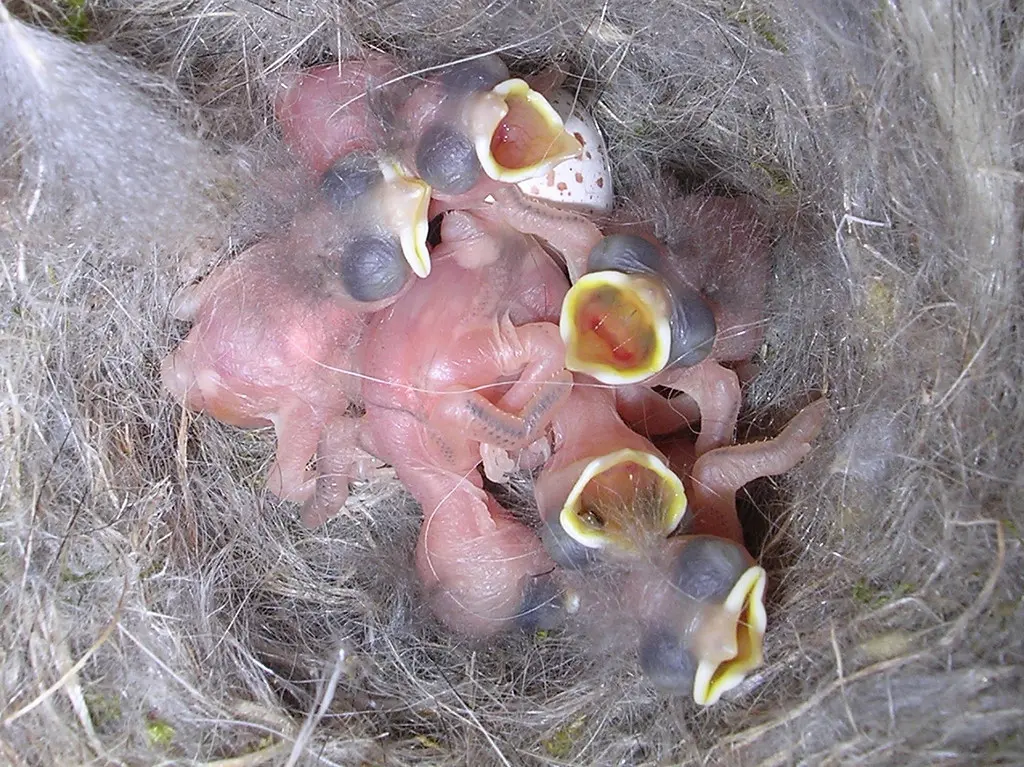
- Nesting Locations: Chickadees prefer nesting in tree cavities, often using abandoned holes created by woodpeckers or excavating their own in soft or decayed wood. This allows them to find suitable locations safely covered from predators and environmental elements. They build their nests typically between 4 to 15 feet off the ground, offering a balance of protection and accessibility.
- Nesting Materials: When constructing their nests, chickadees gather various materials, including moss, dead leaves, feathers, and animal fur. Feathers serve as soft insulation, while moss and plant material help create a comfortable environment for the eggs.
- Construction Process: Nest building is a collaborative effort, primarily led by the female, who constructs the nest cup. The preparation phase occurs as early as January or February, with active construction typically taking place in April. The entire process can take about 4 to 5 days to complete as they gather materials and shape the nest to their liking.
- Egg Laying and Incubation: Chickadees usually lay between 6 to 8 eggs per clutch, with the eggs laid on consecutive days. Incubation lasts about 12 to 13 days, primarily performed by the female, while the male brings her food to sustain her during this critical period. After hatching, the chicks are entirely dependent on the parents for survival for about two weeks.
- Nest Site Selection and Fidelity: Chickadees are selective when choosing nesting sites, seeking locations that maximize the likelihood of success for their brood. If a nesting attempt fails, they are known to abandon the site and search for alternative locations, showcasing their adaptability and responsiveness to environmental conditions.
| Nesting Aspect | Description |
|---|---|
| Nesting Locations | Primarily in tree cavities or artificial boxes |
| Nesting Materials | Moss, feathers, dead leaves for insulation |
| Construction Process | Built primarily by females, about 4-5 days |
| Egg Laying and Incubation | 6-8 eggs per clutch, incubated for ~12 days |
| Nest Site Selection | Selective and responsive to environmental conditions |
Understanding the nesting habits of chickadees reveals their intricate life cycles and the strategies they employ in raising young. Each aspect of their nesting behavior showcases their resilience and adaptability, integral for their survival in diverse environments.
Nesting Preferences and Habits
Nesting preferences among chickadees reflect their adaptability to varied environments while highlighting their strategic nesting habits aimed at ensuring reproductive success. Their choices in nesting sites and materials underscore the importance of safety and resource acquisition.
- Cavity Preference: Chickadees favor nesting in tree cavities, particularly those left by woodpeckers, due to the protection these cavities afford. Nesting in soft or decayed wood allows them to excavate just enough to create a comfortable environment for their brood. The preference for tree cavities comes with a dual purpose: safety from predators and a stable microhabitat.
- Material Gathering: During the nesting season, chickadees collect soft materials to insulate their nests. The items they choose such as feathers, moss, animal fur, and plant fibers serve to create a snug environment for the eggs and hatchlings. This choice of materials highlights their instinctual understanding of how to provide warmth and comfort, critical components during the vulnerable first days of life.
- Nest Construction Details: The process of constructing a nest involves meticulous attention to detail. The female chickadee shapes the nest cup, carefully arranging the gathered materials to optimize warmth and safety for her eggs. This collaborative act often includes the male bringing food to the female, illustrating the necessary partnership during the nesting phase.
- Incubation and Parental Care: Once the eggs are laid, the female takes on the primary role of incubator, maintaining a consistent warmth that is crucial for embryo development. The male, meanwhile, supports the nesting effort by providing food, ensuring the female remains nourished during this essential period.
- Re-nesting Behavior: If environmental or predatory threats disrupt a nesting attempt, chickadees are quick to abandon their nest site and seek alternative options. This ability to relocate ensures the safety and success of future brood attempts, demonstrating their behaviorally responsive nature to challenges within their environment.
| Nesting Preference Aspect | Description |
|---|---|
| Cavity Preference | Favoring holes in trees or artificial boxes |
| Material Gathering | Soft feathers, moss, and animal fur |
| Nest Construction Details | Shaped by females, typically collaborative |
| Incubation and Parental Care | Female incubates, male provides food |
| Re-nesting Behavior | Abandoning failed nests for safer alternatives |
These nesting preferences and habits paint a profound picture of chickadee behavior, illustrating their ingenuity and flexibility in the face of environmental challenges. Observing their nesting process offers a window into the ensemble of relationships and instincts that define these fascinating birds.
Nest Box Guidelines for Attracting Chickadees
Creating welcoming environments for chickadees in backyards or gardens involves specific guidelines to provide effective nesting boxes. Implementing these guidelines can enhance your chance of attracting these delightful birds to your property.
- Nest Box Design: Nest boxes tailored for chickadees should ideally have an entrance hole measuring about 1 1/8 inches in diameter. The box itself should be at least 8 inches in height and depth, with a floor space of around 6 inches by 6 inches. Using untreated wood for construction is critical, as it allows for natural insulation and prevents harmful chemicals from leeching into the nesting environment.
- Placement: To mimic natural nesting habits, it is essential to position the nest box between 5 to 15 feet off the ground. Install in a location that receives sunlight yet provides shelter from strong winds. Nearby trees and shrubs can act as natural cover from predators, increasing the nest box’s appeal.
- Monitoring and Maintenance: Regular monitoring of the nest box during breeding season is necessary. Initial checks are advisable every few days, particularly as the nest develops. However, as the chicks approach fledging, it’s crucial to limit disturbance, allowing the parents to raise their young undisturbed. Consider employing a camera for discreet monitoring to gather insights into their nesting behaviors without causing stress.
- Adding Nesting Materials: To attract chickadees, incorporate some suitable nesting materials within the nest box, such as sawdust or shredded paper. This provision encourages them to use the box and can help create a cozy and appealing environment.
- Feeding Support: Alongside providing nesting boxes, setting up bird feeders stocked with sunflower seeds, peanuts, and suet can help draw chickadees to your garden. Their sociable nature often brings them into close range, providing wonderful observational opportunities for bird enthusiasts.
| Nest Box Guideline | Description |
|---|---|
| Nest Box Design | 1 1/8 inch entrance hole, minimum dimensions |
| Placement | 5-15 feet off the ground; strategic location |
| Monitoring and Maintenance | Regular checks with limited disturbance |
| Adding Nesting Materials | Provide soft materials inside |
| Feeding Support | Use feeders to attract chickadees |
Implementing these nest box guidelines fosters a more inviting environment for chickadees, promoting their nesting success. By providing the appropriate conditions, bird lovers can enjoy the proximity of these charming birds while contributing to their welfare.
Conservation Status
The conservation status of chickadees highlights the importance of protecting these lovely birds in the face of various environmental challenges. Understanding the factors affecting their populations allows for informed actions to support their survival.
- General Status: Chickadees, including species like the Black-Capped and Carolina Chickadee, are generally classified as species of “Least Concern” by conservation organizations. Their adaptability to different habitats and proximity to human environments has enabled them to maintain stable populations overall.
- Threats: Despite their generally stable status, certain threats can impact local populations. Habitat loss due to urban development, deforestation, and climate change are primary concerns. Additionally, competition from invasive species, such as house sparrows and European starlings, can hinder food sources and nesting opportunities.
- Population Monitoring: Long-term studies for chickadees have revealed localized population declines in some regions. For instance, Black-Capped Chickadee numbers have seen declines in New England and parts of the Midwest. While overall trends might reflect stability, attention to these localized decreases is crucial for implementing timely conservation efforts.
- Regional Conservation Efforts: Different regions engage in specific monitoring activities to track chickadee populations, promoting conservation measures aimed at enhancing habitat quality and reducing human-related impacts. Engaging communities around these initiatives fosters awareness and support for chickadee conservation.
- Role of Habitat Preservation: Active efforts to preserve and restore natural habitats can significantly improve chickadee populations. This includes maintaining forested areas, creating wildlife corridors, and promoting sustainable land management practices that prioritize biodiversity.
| Conservation Status Aspect | Description |
|---|---|
| General Status | Usually classified as “Least Concern” |
| Threats | Habitat loss, competition, climate issues |
| Population Monitoring | Localized declines noted in specific regions |
| Regional Conservation Efforts | Monitoring populations and promoting action |
| Role of Habitat Preservation | Enhancing natural habitats aids survival |
Understanding the conservation status of chickadees brings awareness to the challenges they face. By prioritizing habitat preservation and engaging the community, we can foster a more sustainable environment for chickadees and all avian species.
Population Trends and Threats
The population trends of chickadees point to a generally stable status; however, certain factors continue to challenge localized populations. Recognizing these dynamics is essential for supporting the long-term survival of chickadees in North America.
- Overall Population Stability: Chickadee populations are generally stable across their ranges. While some localized declines have been documented, broader trends showcase their resilience as species. For instance, the winter range expansion of chickadees demonstrates adaptive behaviors as they adjust to changing climates.
- Long-term Studies: Research, particularly in regions such as New England, indicates an average population decline of approximately 1.2% per year for Black-Capped Chickadees. Monitoring data is crucial to distinguish between natural fluctuations and concerning trends, ensuring appropriate actions can be initiated.
- Habitat Loss and Urbanization: Populations in suburban areas face challenges from habitat loss and fragmentation due to urban development. These changes reduce foraging and nesting opportunities, prompting chickadees to adapt rapidly to altered landscapes.
- Predation and Competition: Increased predation risk particularly from pets such as cats combined with competition for resources from non-native species, poses additional threats. These factors can restrict successful breeding and food availability, especially during lean seasonal periods.
- Climate Change Effects: Extreme weather events and climate fluctuations exacerbate challenges for chickadee populations. Changes in food availability, nesting conditions, and habitat suitability linked to climate change underscore the necessity to monitor population responses to ongoing environmental alterations.
| Population Trend Aspect | Description |
|---|---|
| Overall Stability | Generally stable populations |
| Long-term Studies | Notable declines in localized regions |
| Habitat Loss | Urbanization reduces nesting opportunities |
| Predation and Competition | Increased threats from pets and invasives |
| Climate Change Effects | Extreme weather impacts food and nesting |
Recognizing the population trends and threats facing chickadees allows for targeted conservation efforts. Through active monitoring and habitat preservation initiatives, we can play a crucial role in ensuring these delightful birds continue to thrive in our natural landscapes.
Conservation Efforts and Support for Chickadees
As part of ongoing initiatives, various conservation efforts aim to support chickadees and their habitats. Understanding these projects highlights the importance of community engagement in preserving avian populations.
- Habitat Restoration: Restoration of natural habitats is a primary focus in chickadee conservation. By retaining and replenishing forested areas and other essential environments, local conservation organizations can help sustain the chickadee populations that depend on these ecosystems.
- Native Planting Initiatives: Encouraging communities to plant native trees and shrubs that provide natural food and shelter enhances chickadee habitats. Native vegetation supports the insects that form a vital part of their diet, fostering healthier ecosystems.
- Nest Box Programs: Initiatives that promote the installation of dedicated nest boxes encourage chickadees to breed successfully in human-altered landscapes. These programs educate communities on proper nest box design and placement, increasing opportunities to attract these charming birds.
- Reducing Human Impact: Steps to minimize threats include promoting responsible pet ownership, such as keeping cats indoors to reduce predation risks. Community education regarding the impact of human actions on wildlife fosters a more compassionate approach to bird conservation.
- Engaging in Citizen Science: Conservation organizations encourage individuals to participate in citizen science projects, monitoring chickadee populations and reporting observations. This information contributes valuable data to researchers studying the birds’ ecology and assists in assessing the impact of ongoing conservation efforts.
| Conservation Effort Aspect | Description |
|---|---|
| Habitat Restoration | Replenishing natural forests and ecosystems |
| Native Planting Initiatives | Promoting indigenous vegetation in backyards |
| Nest Box Programs | Installation of dedicated nesting habitats |
| Reducing Human Impact | Educating on responsible pet ownership |
| Engaging in Citizen Science | Involving communities in observational efforts |
By combining these conservation efforts, attendees’ awareness of chickadees and their challenges can be heightened. Engagement in local and national initiatives encourages collective efforts to ensure that chickadees remain vibrant members of the avian community in North America.
In summary, chickadees are remarkable birds whose engaging behaviors, fascinating characteristics, and diverse habitats make them a delightful presence in the natural world. Understanding their ecology, habitats, and the threats they face is crucial for fostering a sense of stewardship, ensuring future generations can also admire and enjoy observing these lively little birds.


